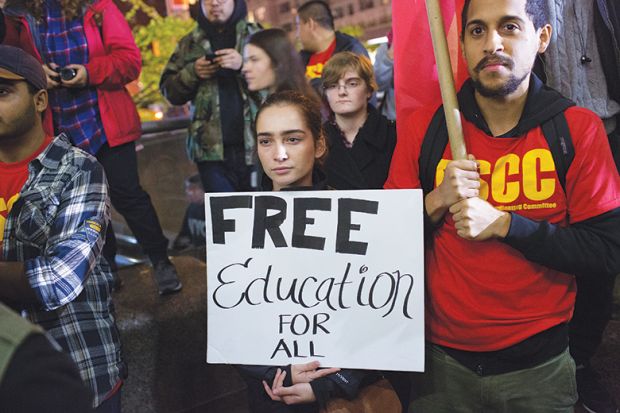In November 2021, higher education leader Pano Kanelos launched the University of Austin with the words: “We can't wait for universities to fix themselves. So we’re starting a new one.” Higher education in the US today is most certainly in crisis – not, as the right wing claims, from suppression of conservative voices that led to the creation of the University of Austin, but from rising student loan debt, shifting student demographics, increased casualisation of the faculty, and the role of higher education in promoting white supremacy. This raises the question of whether universities can address these problems and what alternative models of higher education might look like.
The University of Austin proposed to distinguish itself with a focus on “pursuit of the truth”, implying that other universities – caricatured as bastions of liberal elitism in the cultural imagination – are not focused on “truth”. This assumes, however, that the purpose of the university is to seek truth. This is among the many myths of the contemporary university in the US: that it was founded in the pursuit of knowledge and critical thinking.
The history of higher education in the US tells us otherwise. Unlike in Europe, where higher educational traditions stretch back to the 11th century, universities in the US are relatively young. The university in the US emerged in the 17th century to educate elite young men to take up their place at the helm of a new nation, enabled by and, in turn, upholding enslavement and settler colonialism. Later, inspired by the German research university, Johns Hopkins University originated the model of the US research university (now called R1s in the US). A small subset of US universities adopted the model and made knowledge work the centre of that enterprise, while the remainder – the vast majority – maintained a mission of educating a citizenry and preparing students for professions. In our contemporary moment, however, it is impossible to separate these lofty goals from the university’s role in credentialling.
How might we get closer to the imagined goals of the university: knowledge and critical thinking? A three-pronged approach is necessary: public reinvestment in higher education, reform of existing universities, and imagining new forms of higher education.
The current funding model for universities in the US is untenable and fails to serve students. Over the past three decades, federal and state funding for universities has fallen. This has led to the privatisation of public higher education, in which students have been forced to bear the costs of higher education. Given that budgets are indicators of value, it’s telling that as American studies professor Christopher Newfield has written, the systematic defunding of public higher education in the US correlates with increased numbers of black, Latinx, Indigenous and Asian students entering higher education. Public reinvestment is thus a prerequisite to realising higher education reform.
Further efforts are needed to address problems at existing universities. Universities have a responsibility to ensure that people of different racial and ethnic identities, genders, sexualities, abilities, nationalities and immigration status have access to high-quality education. This requires ensuring that curricula reflect these students’ identities, needs and interests, and hiring more faculty of colour and more Indigenous faculty. At the same time, universities must reckon with and make amends for their histories of enslavement and ongoing participation in Indigenous dispossession and genocide. Further, universities must resist funding from outside interests looking to interfere in university affairs, such as the Koch family and Hindu nationalists.
It’s also important to recognise the limitations of universities as agents of change, given that they are, by nature, “institutions”. The model of the “freedom school” is one alternative, developed in the 1960s to provide liberatory education to black students. In this tradition, Freedom University in Atlanta aims to “educate and empower undocumented students and fulfil their human right to education”. It offers tuition-free college courses and educator training, advocates for policy change, and organises direct actions related to immigration and education. Freedom University is thus one example of an intervention in higher education that promotes pursuit of knowledge and critical thinking.
It is a myth to say that the purpose of the university is to seek truth. But universities can fix themselves, and we need new ones and public funding to realise the promise of higher education.
Roopika Risam is chair of secondary and higher education at Salem State University.
View the THE Young University Rankings 2022 results
POSTSCRIPT:
Print headline: Truth and the American way
Register to continue
Why register?
- Registration is free and only takes a moment
- Once registered, you can read 3 articles a month
- Sign up for our newsletter
Subscribe
Or subscribe for unlimited access to:
- Unlimited access to news, views, insights & reviews
- Digital editions
- Digital access to THE’s university and college rankings analysis
Already registered or a current subscriber? Login








